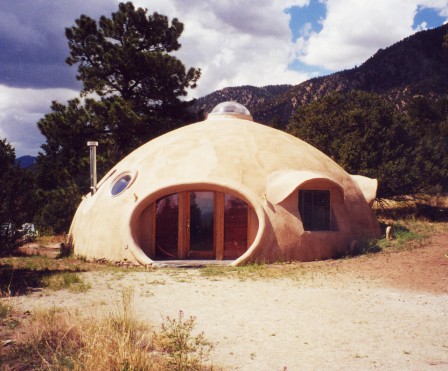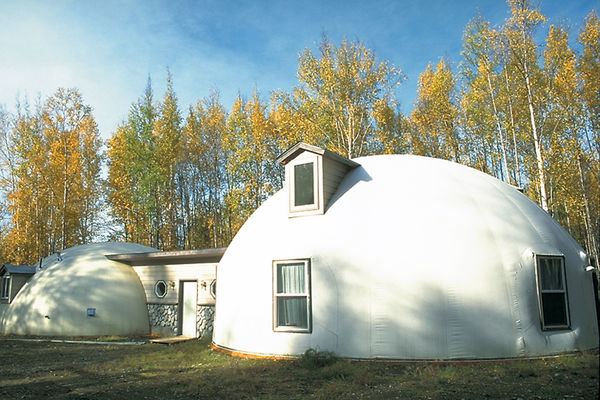Monolithic Domes
 |
| Photos courtesy of Monolithic |
Monolithic domes are constructed by laying a concrete ring foundation, inflating an airform, coating its interior with three inches of polyurethane foam, attaching a gridwork of steel rebar, and covering the rebar and polyurethane with three inches of shotcrete, a sprayed concrete. The exterior is coated with paint, stucco, ceramic tile, polyurea, sprayed concrete, metal, or cultured stone. The result is an extremely strong, pest-proof, and well-insulated structure.
Advantages of Monolithic Domes:
- While the lab-tested R-value of a Monolithic dome's shell is a respectable 27-30, the effective R-value, as explained here, is more like 60, due to the absence of air and moisture infiltration and the thermal mass of the concrete.
- High thermal mass keeps temperatures even and thus more comfortable.
- A concrete dome offers exceptional resistance to fire, earthquakes, and extreme wind.
- With concrete only three inches thick, Monolithic domes use less concrete than conventional concrete structures.
- Concrete will not rot, warp, or get eaten.
 |
For much more information, see Monolithic.
